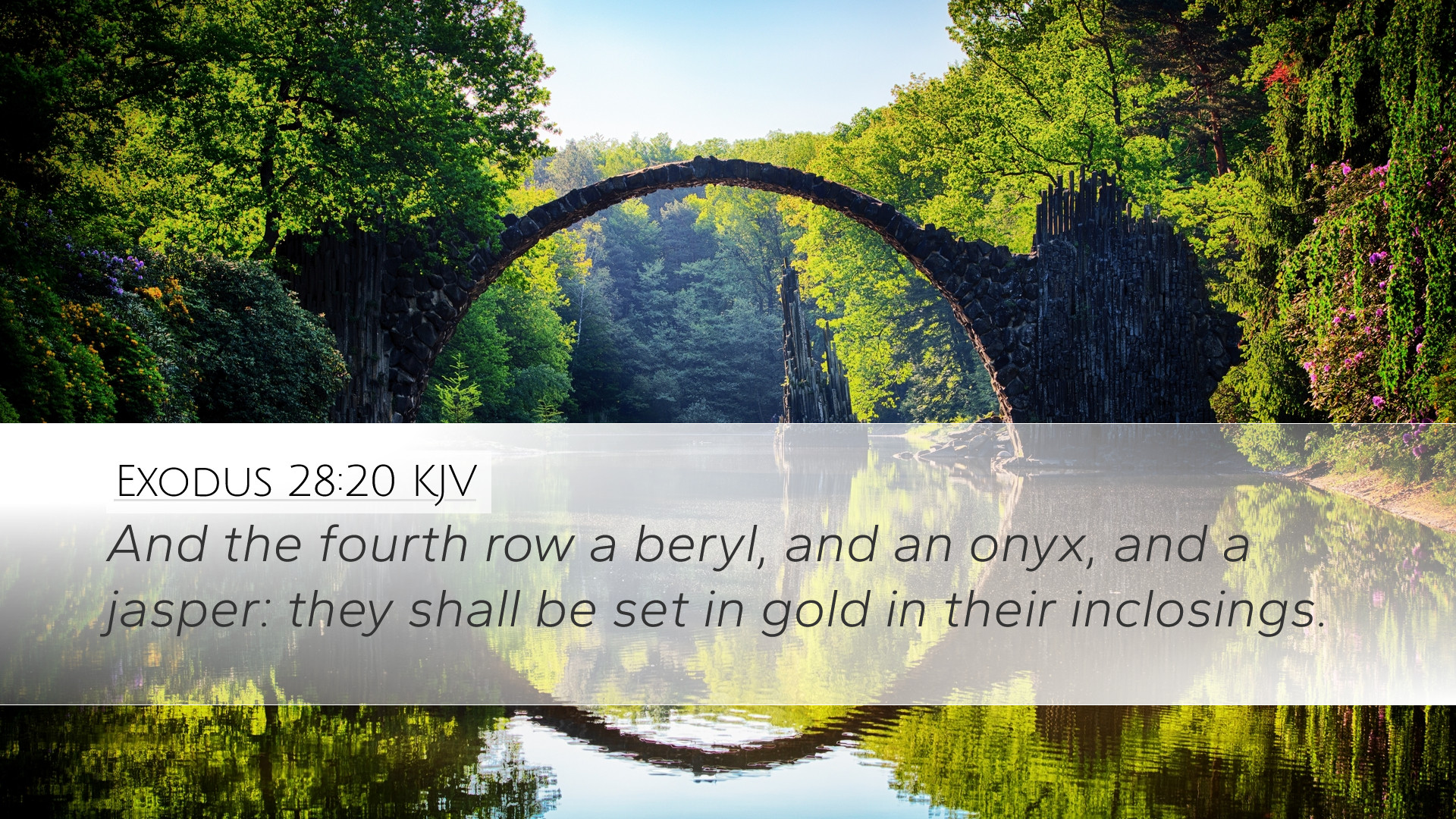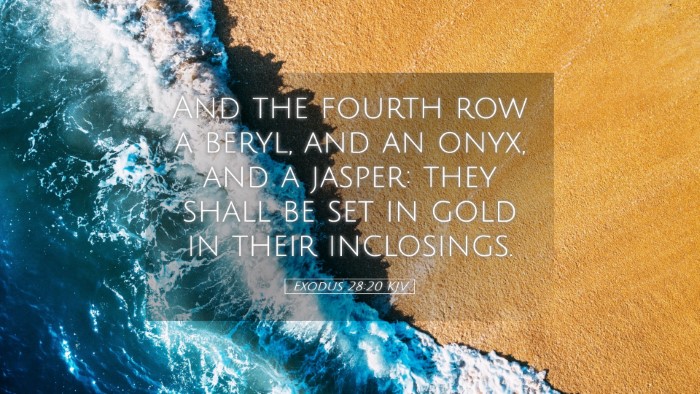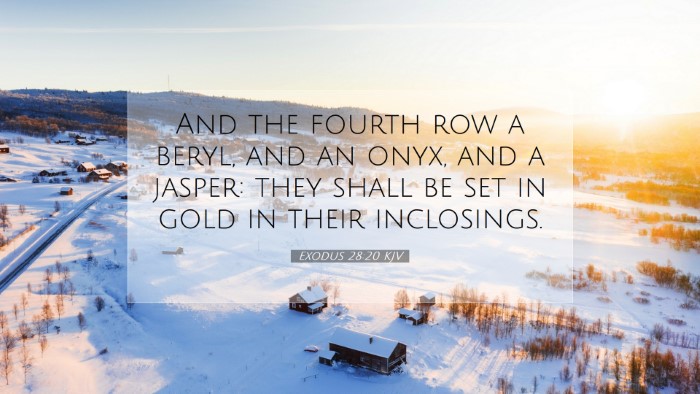Commentary on Exodus 28:20
Exodus 28:20 states: “And the third row a jacinth, an agate, and a beryl.” This verse forms part of the description of the priestly garments which were made for Aaron, the High Priest of Israel. The significance of these stones and their arrangement bears deep theological implications.
Introduction to the Context
The book of Exodus chronicles the journey of the Israelites from slavery in Egypt to their covenant relationship with God at Sinai. Chapter 28 focuses specifically on the garments of the High Priest, symbolizing his role as mediator between God and the people. Each garment serves a purpose, both practical and symbolic, and the stones mentioned in this verse are no exception.
The Significance of the Stones
The stones mentioned in Exodus 28:20—jacinth, agate, and beryl—were not only precious in nature but also held specific meanings in biblical symbolism.
- Jacinth: A deep blue or violet stone, often associated with heaven and divine glory. Matthew Henry highlights that it represents the majesty of God and the responsibilities of those who serve Him.
- Agate: A stone known for its layered colors, it symbolizes stability and harmony. Albert Barnes emphasizes that the agate represents the stability and faithfulness required of God’s servants.
- Beryl: Typically green, this stone is considered to embody the sense of vibrancy and life, recalling the everlasting nature of God’s promises. Adam Clarke points out its association with tranquility and regeneration.
The Arrangement of the Stones
The arrangement of these stones in the High Priest's breastplate was deliberate and meaningful. In a broader context, they represented the twelve tribes of Israel, reminding the priest of his duty to bear the people before God. Each stone, therefore, is tied to the identity of a tribe, reflecting the unity and individuality of God's chosen people.
Henry notes that the breastplate’s configuration serves to illustrate the weight of responsibility on the High Priest to intercede for the tribes before God. This foreshadows the ultimate priesthood of Christ, who carries all believers before the Father.
Theological Implications
In a theological context, the description of the garments and the specific use of stones illustrate important truths about God's redemptive plan.
- Representation: The garments, adorned with these stones, bring to light the idea of representation in worship. As the High Priest, Aaron represents the people before God, and likewise, Christ represents believers as the ultimate High Priest.
- Identity: The stones signify the identity of the people, suggesting that God is intimately aware of His children. The specificity of the tribes reflects His detailed care for every individual.
- Intercession: The role of the High Priest is one of intercession, and the stones remind us of Christ's ongoing ministry. Clarke emphasizes that, as believers, we can approach God with confidence because Christ intercedes for us.
Practical Applications
This rich imagery of the High Priestly garments offers several practical applications for believers today:
- Understanding Our Identity: Just as each stone reflected a tribe, believers should understand their identity in Christ. Each member is valued and has a role in the body of Christ.
- Value of Intercession: The role of intercession remains vital. Believers are encouraged to pray for one another and to lift each other up, much like the High Priest did for the tribes.
- A Call to Holiness: The majestic nature of the garments serves as a reminder of the calling to holiness in our approach to God—a theme prevalent throughout scripture.
Conclusion
The stones represented in Exodus 28:20 carry a multitude of meanings that extend beyond their physical beauty. They encapsulate the broader themes of representation, identity, and intercession. With careful study, one can draw both theological insights and practical applications relevant to the lives of believers today. The priestly garments thus serve as a profound symbol of God’s care, the weight of spiritual responsibilities, and the beauty of covenant relationship.


